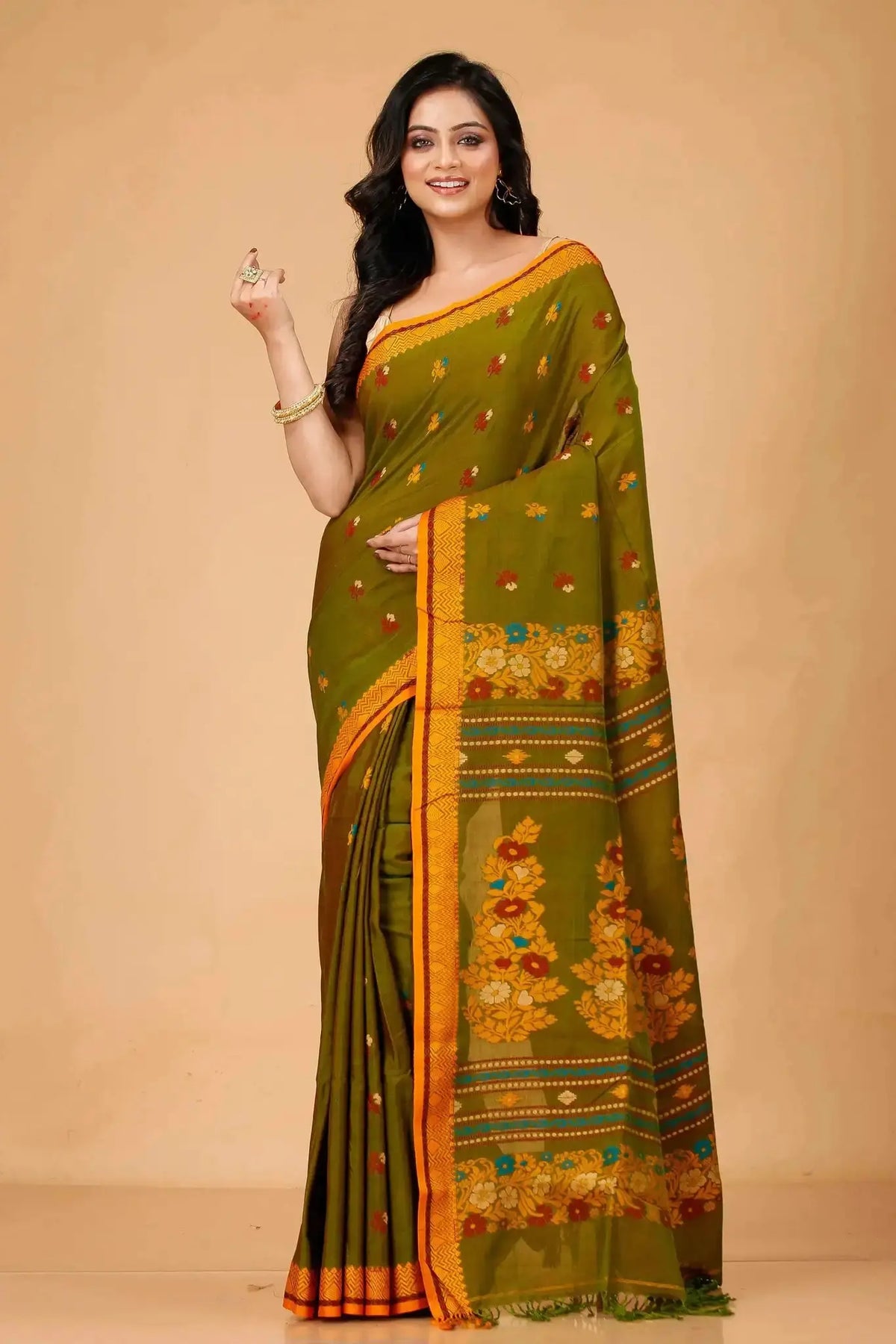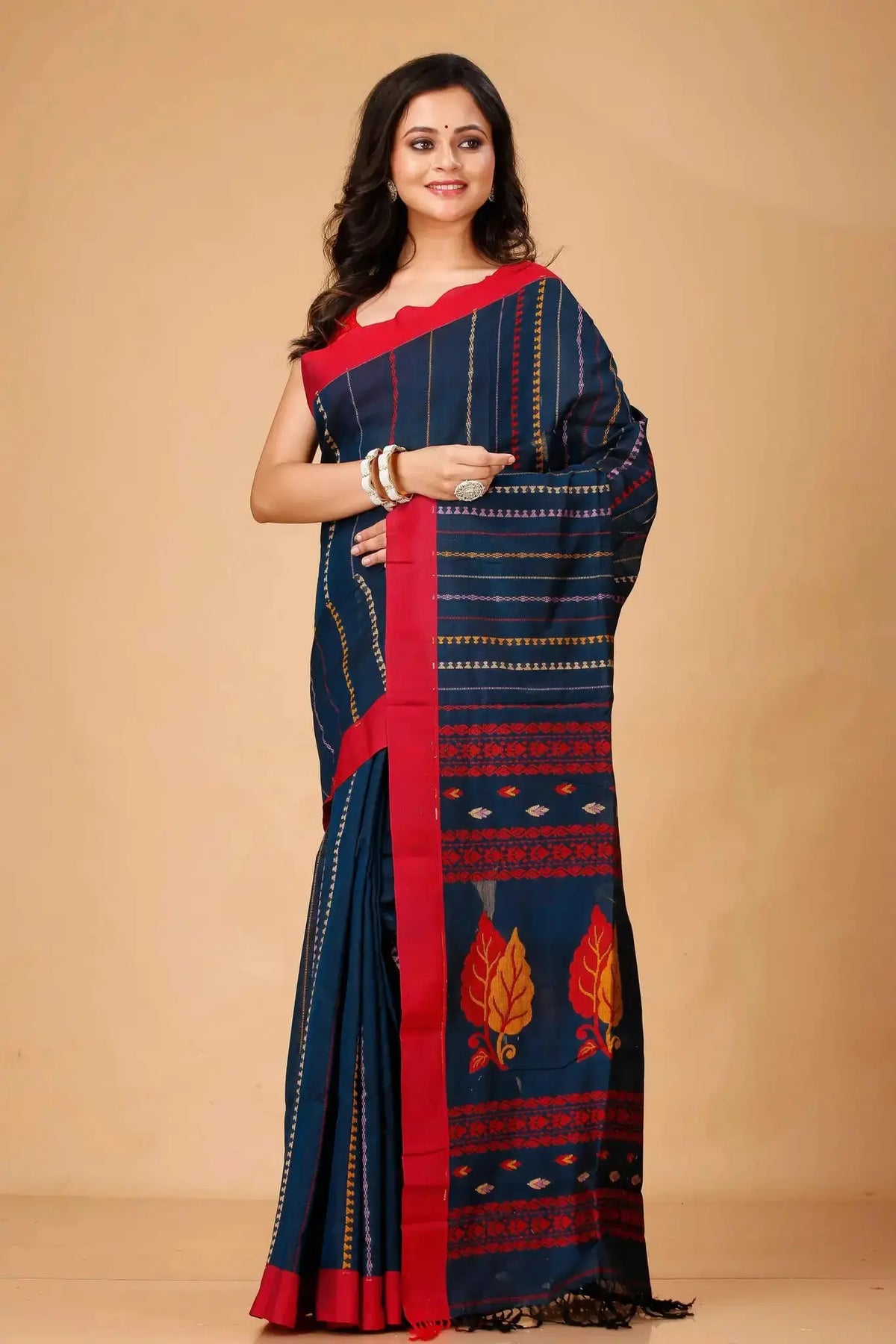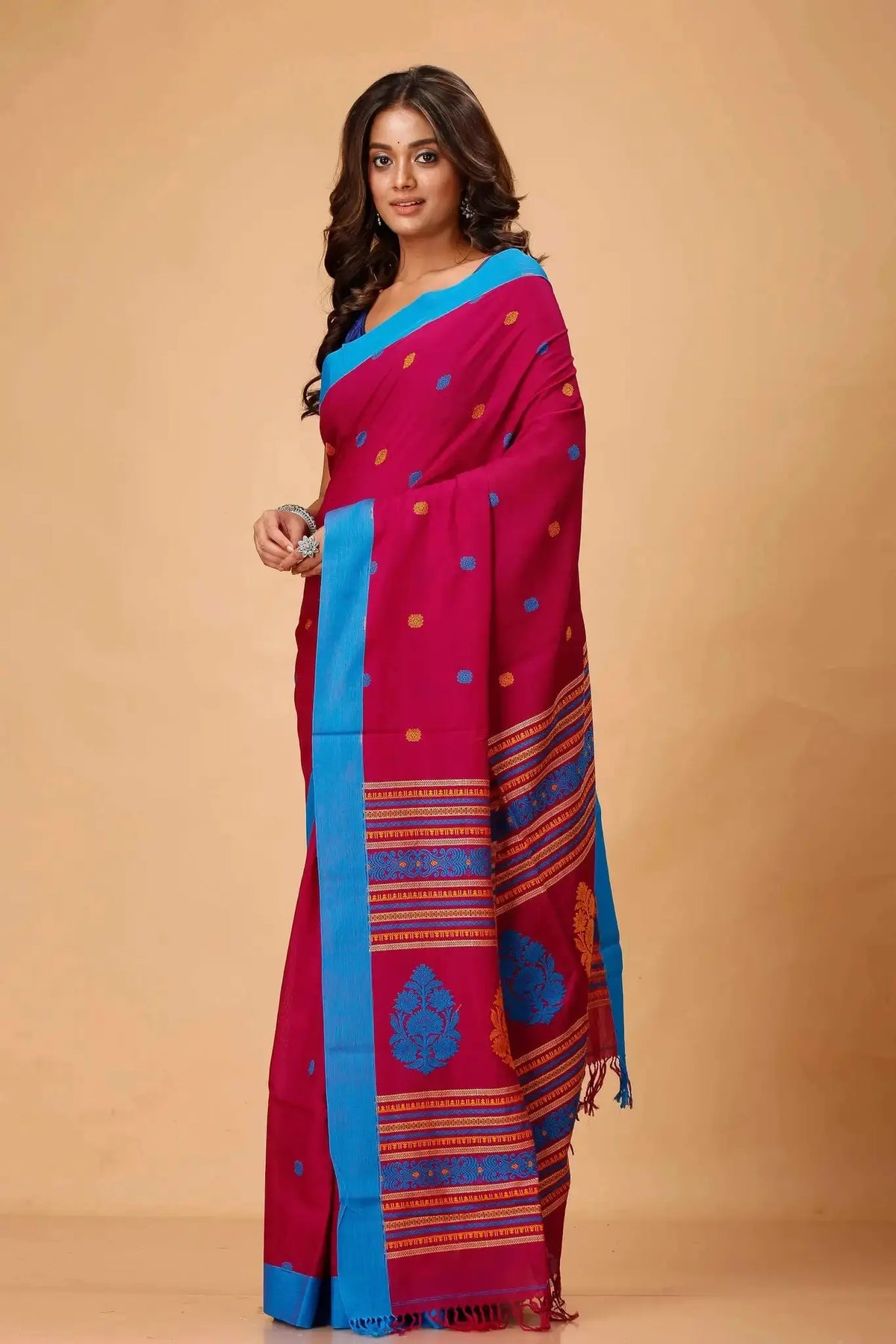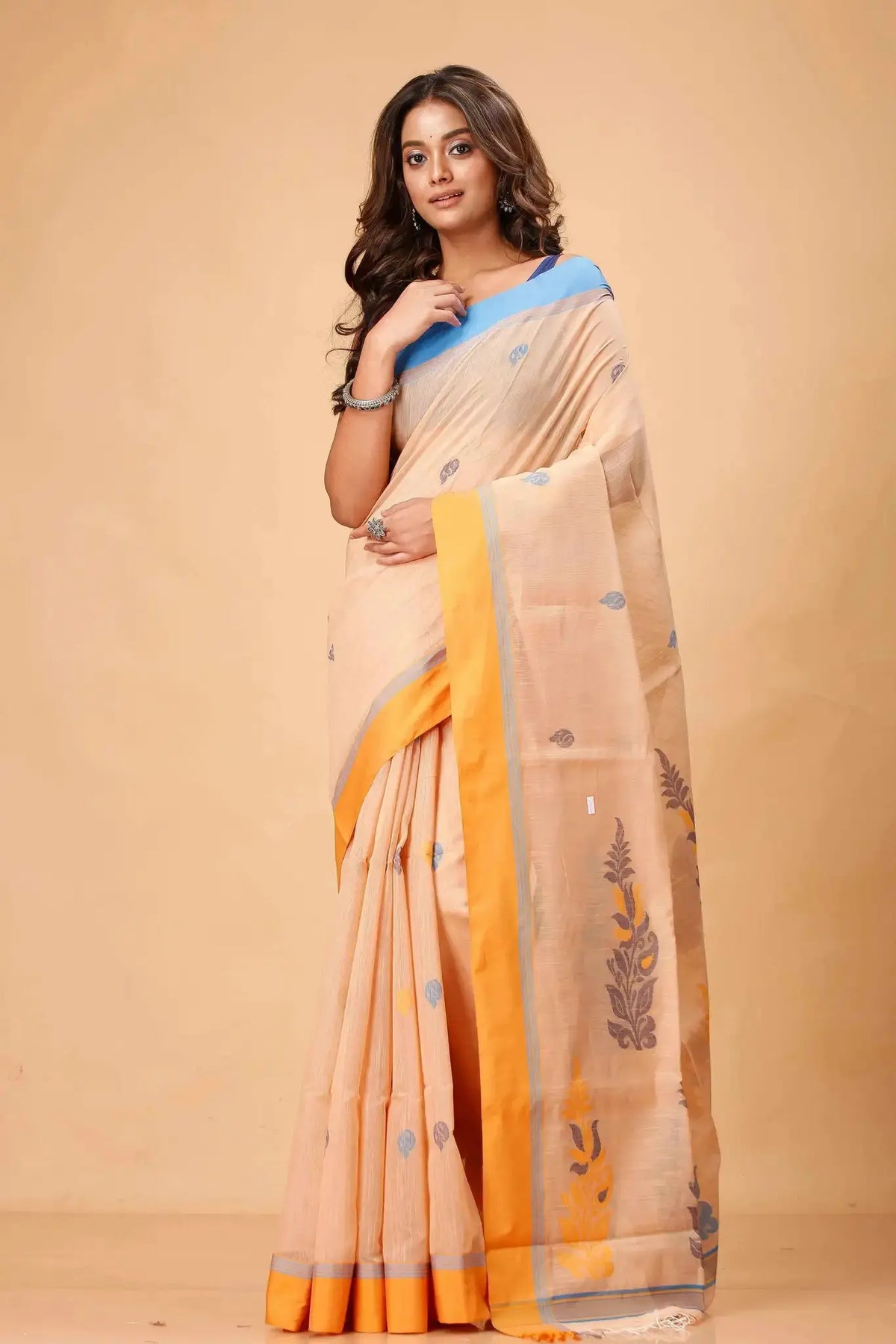The allure of Indian sarees extends beyond their vibrant colors and rich textures. They are a testament to India's immense cultural heritage. Two of the most celebrated forms are the South Indian Saree and the Bengal Handloom. Each has its own history and significance, showcasing the diversity and expertise of Indian craftsmanship.
The Elegance of South Indian Sarees
Tradition and Craftsmanship
South Indian sarees are a symbol of elegance and timeless appeal. These sarees are renowned for their intricate designs and bright, bold colors, often made from silk. Each region in South India boasts its unique style, such as the Kanjeevaram from Tamil Nadu, famous worldwide for its exquisite silk and craftsmanship.
These sarees are often woven using pure silk threads, creating an exceptional sheen. The designs often incorporate traditional motifs inspired by nature, temple architecture, and cultural folklore. Wearing a South Indian saree is not just a fashion statement but also a celebration of India's rich heritage.
Cultural Significance
The South Indian saree is more than just an attire; it is an integral part of cultural identity. It plays a pivotal role in various ceremonies, especially weddings, where the bride is adorned in these stunning sarees. This practice reflects a deep-rooted tradition and a mark of respect towards cultural lineage.
Bengal Handloom: A Legacy Woven in Cotton
The Artistry of Jamdani and Bengal Handloom
Bengal Handloom, with its illustrious history, is synonymous with 100% cotton sarees, recognized for their comfort and minimalistic elegance. The Jamdani saree, a part of Bengal’s textile tradition, stands out for its intricate patterns. This weaving technique requires immense skill, transforming fine muslin into masterpieces adorned with floral and geometric designs.
One notable piece from this tradition is the Lava Red Pure Cotton Bengal Handloom Saree with Gold Geometric Border and Pallu. It exemplifies the meticulous craftsmanship that defines Bengal Handloom.
Celebrating Cotton
Bengal’s preference for cotton over other materials can be attributed to its climate, with 100% cotton sarees offering breathability and comfort. These sarees often feature hand-painted or hand-blocked designs, with each piece telling a unique story. For instance, the Moon Mist Pure Cotton Bengal Handloom Saree with Colorful Striped Border is a vibrant embodiment of this tradition.
Cultural Role
Bengal Handloom sarees are cherished for both their aesthetic and symbolic value. Worn during festivals, such as Durga Puja, they hold a spiritual significance, with their colors and motifs often representing themes from mythology.
Weaving Traditions and Modern Styles
While both South Indian and Bengal Handloom sarees are deeply rooted in tradition, they continue to evolve with modern tastes. Designers across the globe have been incorporating these traditional weaves into contemporary fashion, reviving interest among younger generations.
A perfect example is the fusion of traditional motifs with modern aesthetics seen in pieces like the Rose Gold Pure Cotton Bengal Handloom Saree with Green Border Woven Motifs. These sarees blend classic Bengali techniques with innovative styles, making them versatile for different occasions.
Conclusion
The South Indian saree and the Bengal Handloom are more than just garments; they are inheritances passed down through generations. They embody history, artistry, and cultural identity, weaving stories of craftsmanship and tradition. As we embrace modern innovations, these sarees remain a cherished reminder of India's diverse cultural tapestry.
To explore more about the exquisite variety of Indian sarees, visit Grivana.







